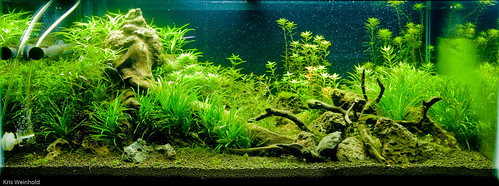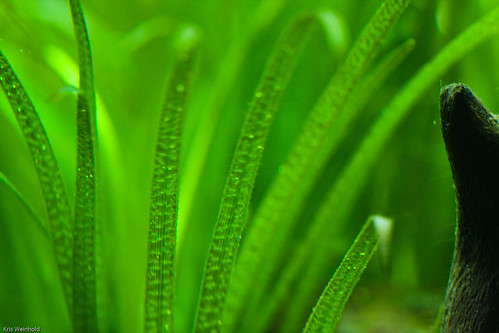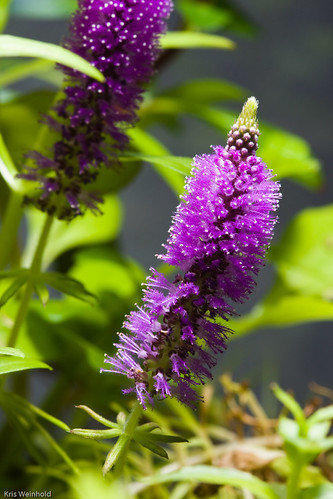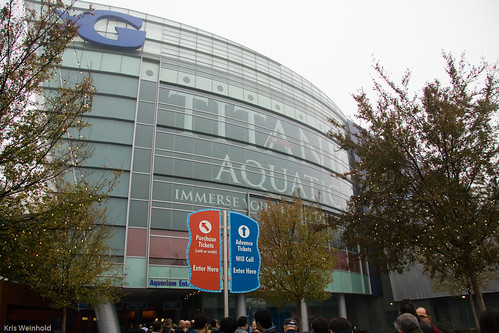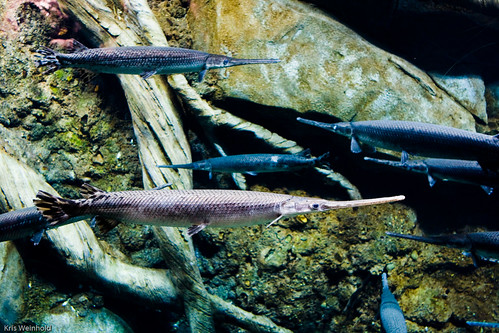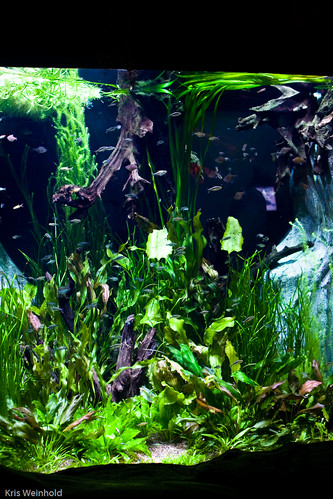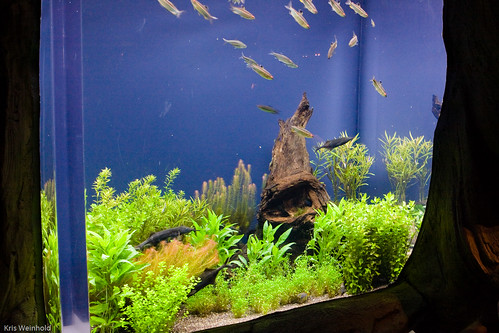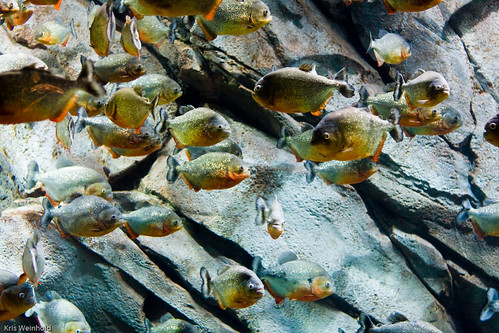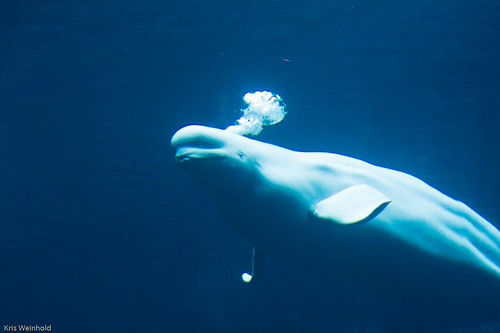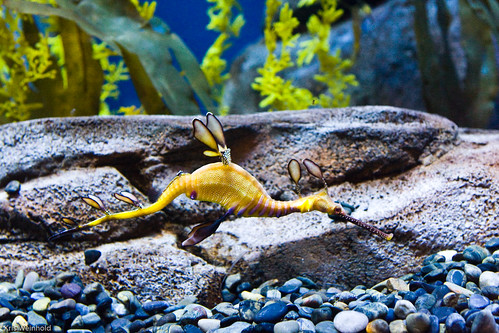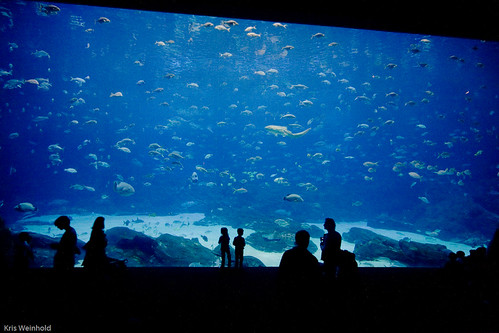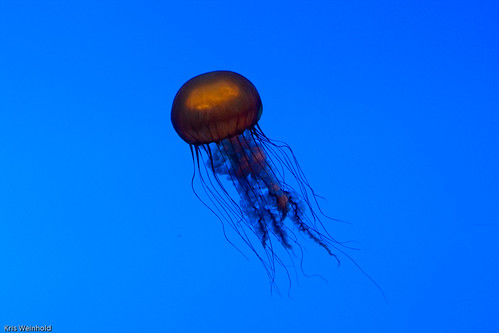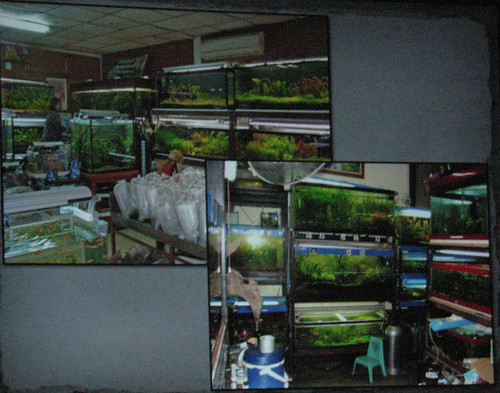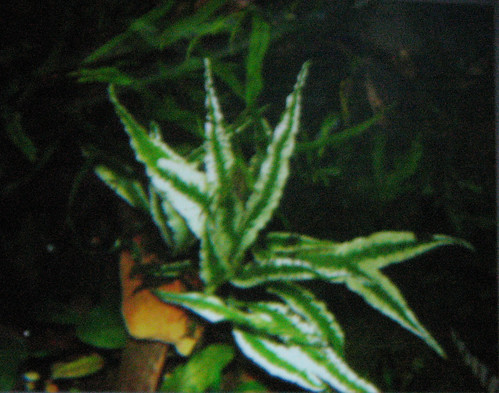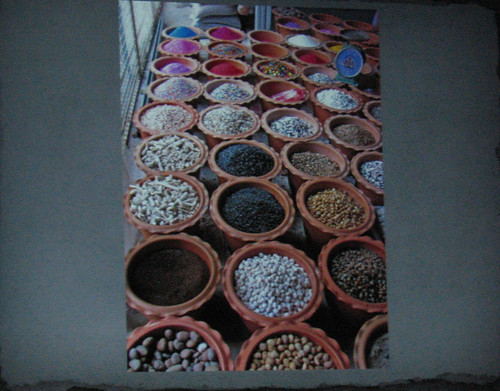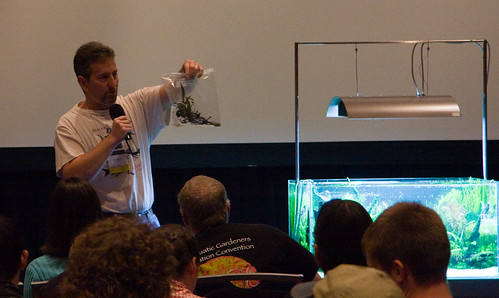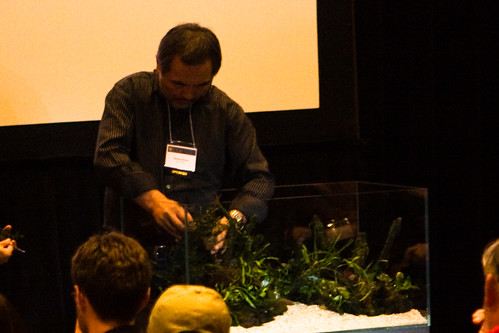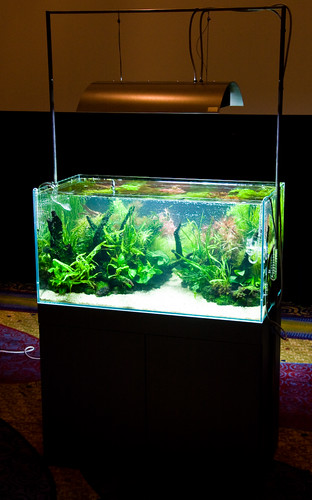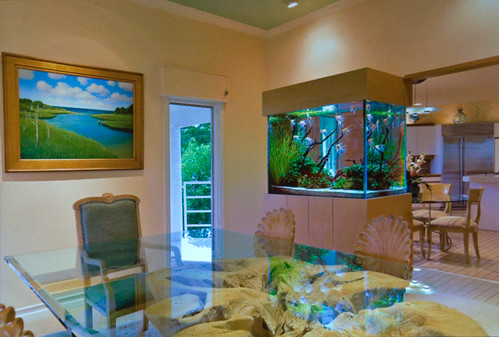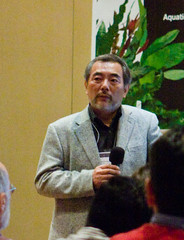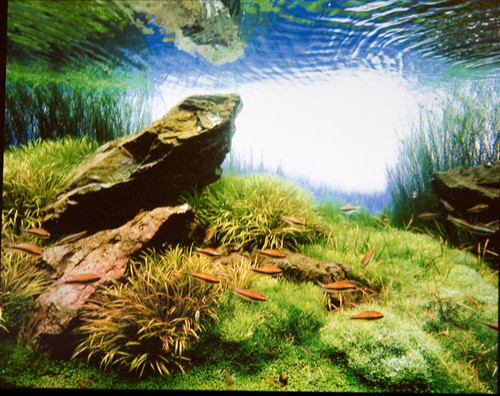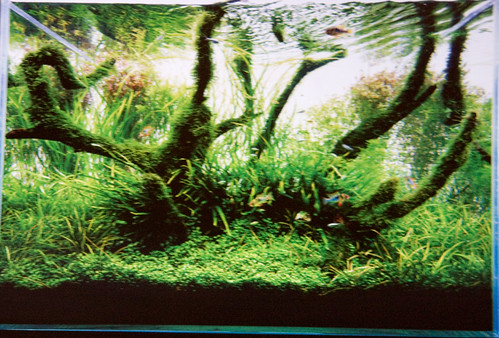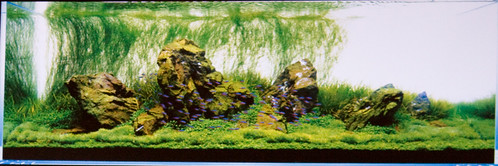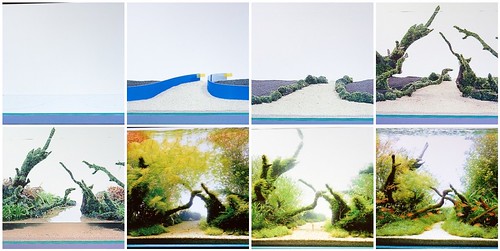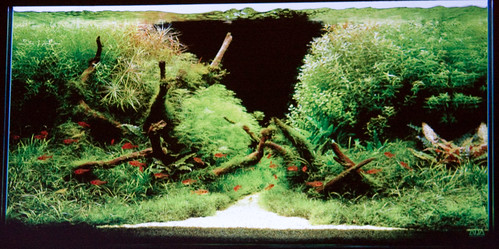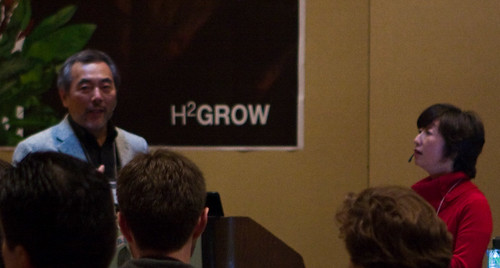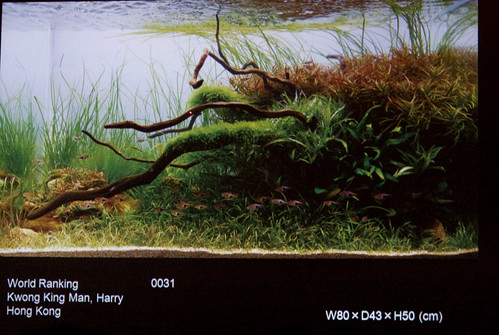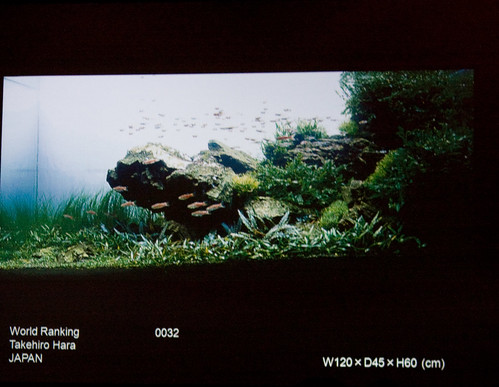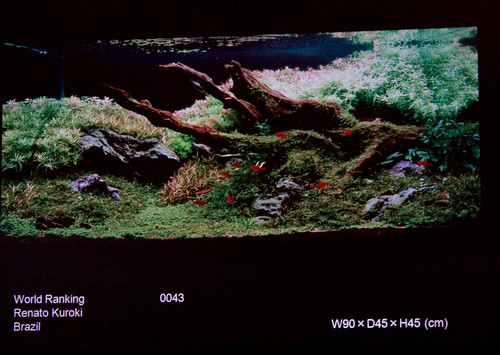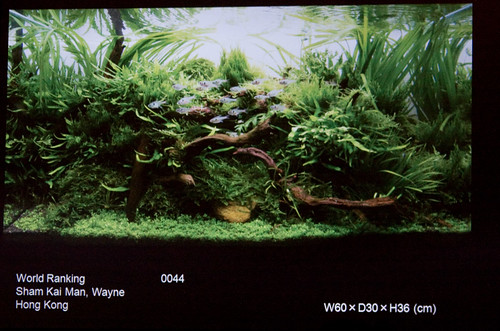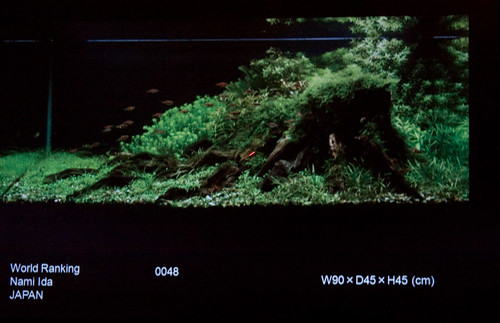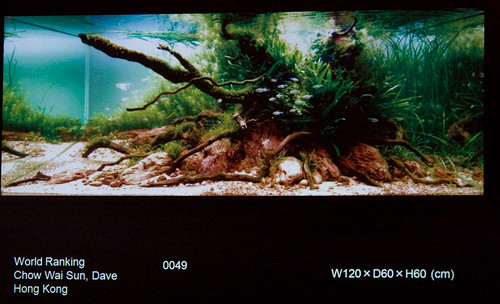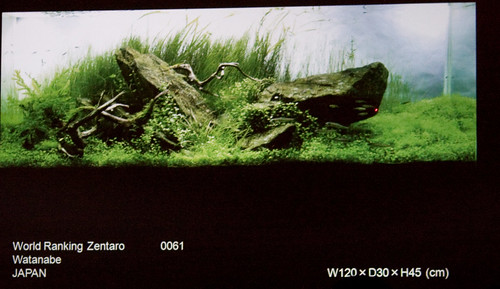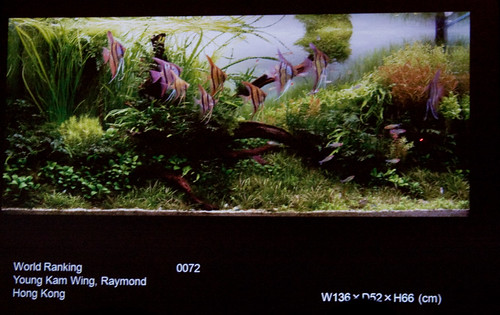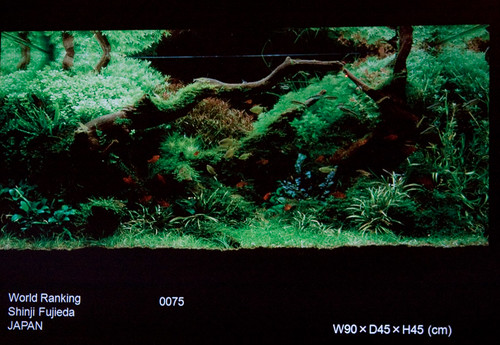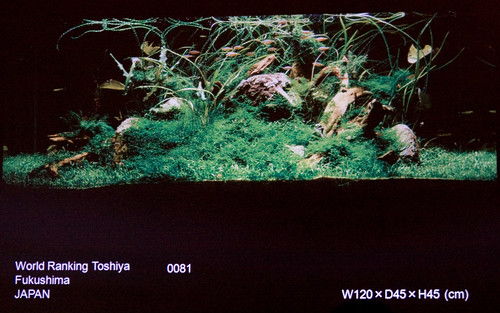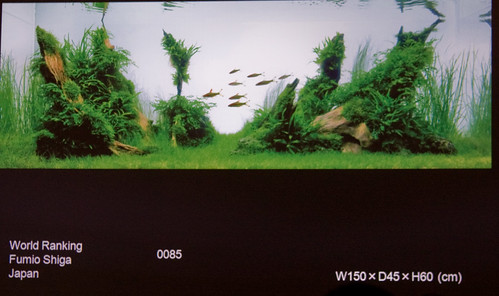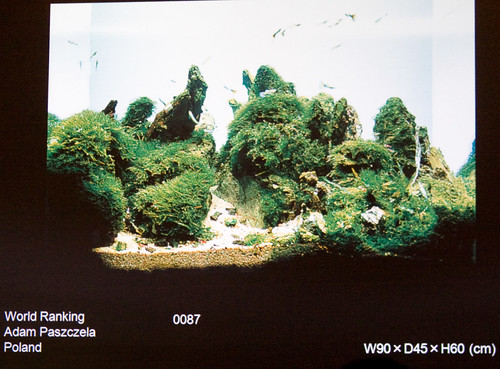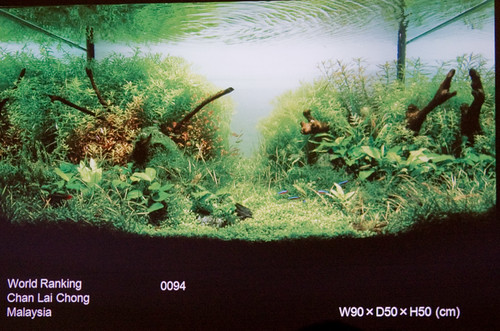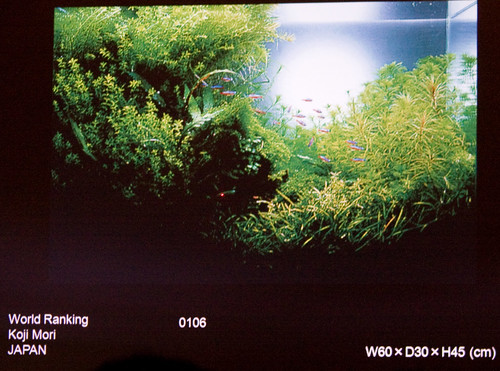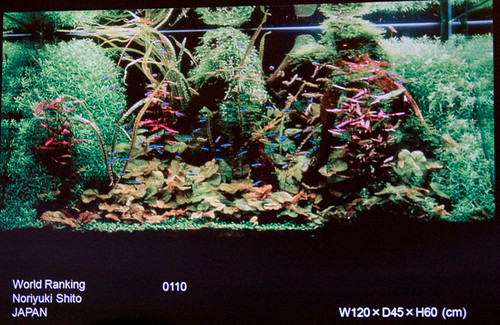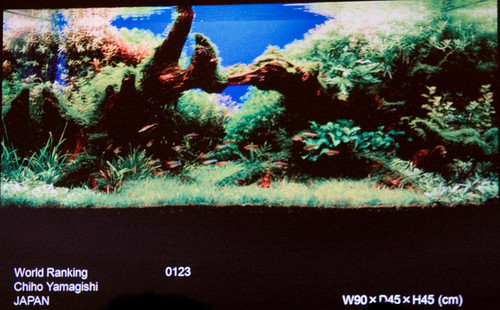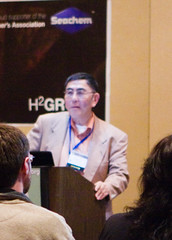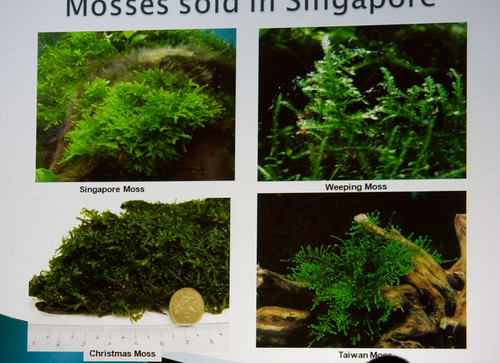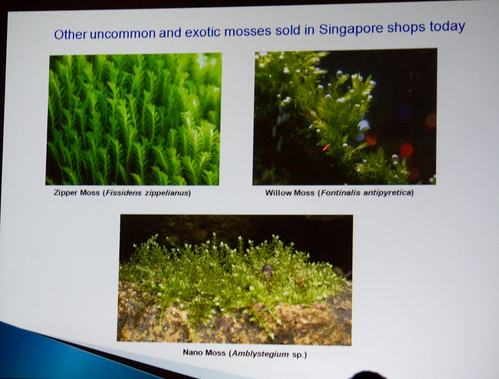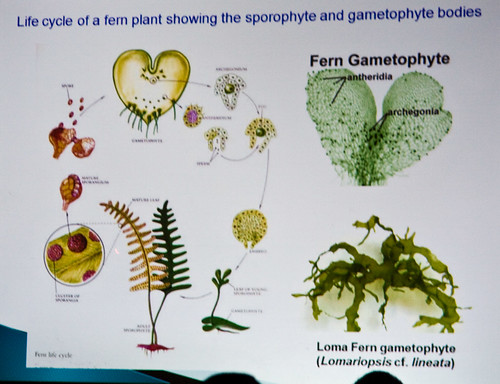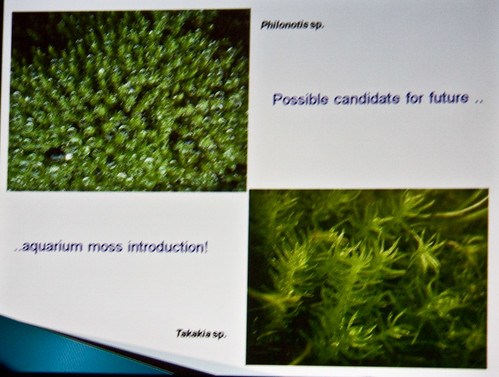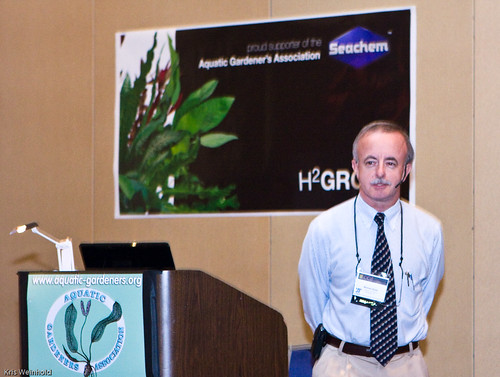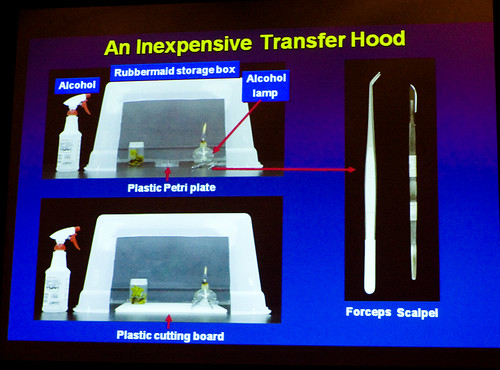50G Aquascape: 3 Weeks In
November 29th, 2008It’s been about 3 weeks since I first planted my new 50G aquarium. Since then, I got my 4x39W T5 lights from Catalina Aquarium, which are fantastic, and have tweaked a number of things in the tank. The biggest thing so far is that I removed a few pieces of the manzanita wood, which I decided were breaking up the flow of the aquascape from the left to right. As you can tell, the plants are all growing, but unfortunately, you can also see that I have a fair amount of algae. Part of the reason for this is that until this weekend, I didn’t have an extra timer to run the lights separately, so all four bulbs were going for 10 hours straight.
Now, only two are running, with the other two coming on for a mid-day burst of light. Hopefully that will clear things up after a bit. Despite the algae, the plants are growing well, and there’s lots of pearling going on. I changed up a few of the plants, taking out the Echinodorus sp. ‘Vesuvius’ , replacing it with Limnophila sp. ‘Mini’, and in the center mid-ground, I added Najas grass. All of the plants need a good trimming, but at this point, I’m still trying to propagate the stems a little bit more so that I can replant them. After that, I’ll start bushing them out via trimming.
In addition to the plants, I also added a group of some fantastic Black Morpho Tetras, or Poecilocharax weitzmani. They’re still young, and quite skittish, so it’ll probably be awhile before I can get a decent picture of them, but there’s a fantastic photo of one on Aquahobby.com. They also seem to be growing, and I’m sure they love the acidic nature of the Aquasoil at this point, since they originate from blackwater streams. So, right now, it’s still just waiting game before I can really start fine runing the plants. Comments welcome!
